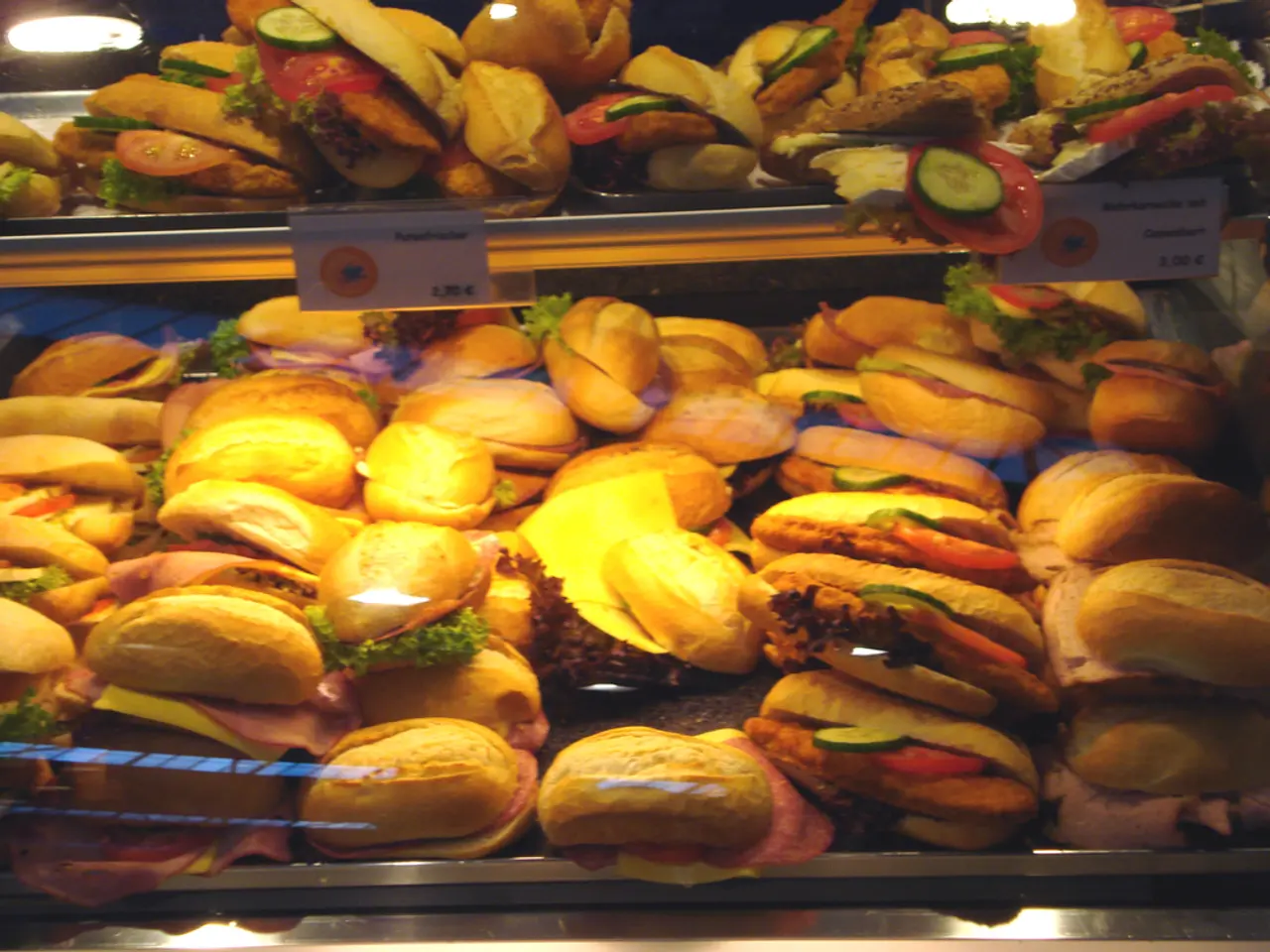Burger King making substantial investments to redesign and enhance the Whopper, expecting increased foot traffic in their stores.
Burger King Pushes Forward with Business Revamp and Growth Strategy
Burger King, a popular fast-food chain under the parent company Restaurant Brands International (QSR), is making significant strides in its business revamp and growth strategy. The company recently reported a 5.3% system-wide sales growth year-over-year, with Burger King U.S. achieving a 1.3% same-store sales increase.
CEO Josh Kobza shared this information during a call to discuss the company's quarterly financial results. However, Kobza noted that the sales growth does not yet indicate a positive trend.
The $400 million-plus investment towards Burger King's business revamp, part of the larger "Reclaim the Flame" multi-year plan, is driving positive changes. This investment has been allocated towards remodels, menu innovation, digital enhancements, and other strategic initiatives.
One of the key strategies is the "Royal Reset" program, which aims to refresh around 85% to 90% of locations by 2028. Remodels, especially those using the "Sizzle" image, have resulted in mid-teen percentage sales lifts and improved profitability. Renovated sites approach $300,000 in average profitability.
Digital investments and advertising through the "Fuel the Flame" initiative are another focus area. This initiative aims to enhance customer engagement and drive sales digitally. Burger King has spent $32 million out of the $400 million plan on ads and digital offerings, and $35 million on remodeling.
The company is also modernizing its restaurants with the installation of kiosks. The guest reception to kiosks has been better than it might have been five to seven years ago.
Burger King is also aiming to improve operational focus and franchisee profitability by shifting the franchise model towards smaller, more capable operators. The goal is to have franchisees managing no more than 50 units.
In addition, Burger King is closing underperforming locations to optimize system-wide performance. This strategy was evident in the net reduction of 77 U.S. restaurants in 2024.
Kobza stated that growth in traffic is one of the most significant near-term opportunities for the brand. Burger King is planning to implement "really high-quality remodels" for its restaurants by the end of this year into next.
Whopper-specific promotions, such as the limited-edition Spider-Verse Whopper and marketing Whopper customizations, boosted sales in the second quarter ending on June 30th.
Restaurant Brands International, which also owns Tim Hortons, Popeyes, and Firehouse Subs, reported sales of $1.78 billion, surpassing Wall Street expectations of $1.75 billion.
Despite challenges like beef inflation and a soft quick service sales backdrop, Burger King's strategic initiatives have strengthened its competitive position and customer traffic. Management remains optimistic about continuing this growth trajectory with ongoing remodeling and innovation investments throughout 2025 and beyond.
For more updates on Burger King's menu changes and growth strategies, check out the related articles "Burger King Is Making Major Changes to 2 Fan-Favorite Menu Items in an Attempt to Combat Inflation" and "This Is Wild": Internet Is Losing It Over Burger King's 20-Slice Cheese Sandwich.
- Burger King's strategic investment of over $400 million towards its business revamp, as part of the "Reclaim the Flame" plan, has been allocated towards remodels, menu innovation, digital enhancements, and other strategic initiatives.
- One of the key strategies in Burger King's growth plan is the "Royal Reset" program, which aims to refresh around 85% to 90% of locations by 2028, with remodels using the "Sizzle" image resulting in mid-teen percentage sales lifts and improved profitability.
- Another focus area in Burger King's growth strategy is digital investments and advertising through the "Fuel the Flame" initiative, aiming to enhance customer engagement and drive sales digitally.
- Burger King is modernizing its restaurants with the installation of kiosks, with guest reception to kiosks being better than it might have been five to seven years ago.




